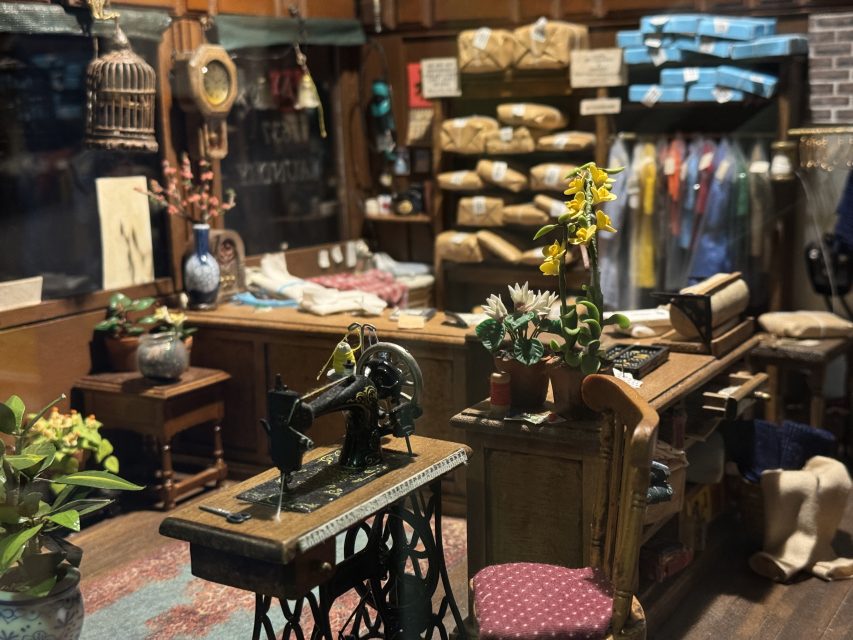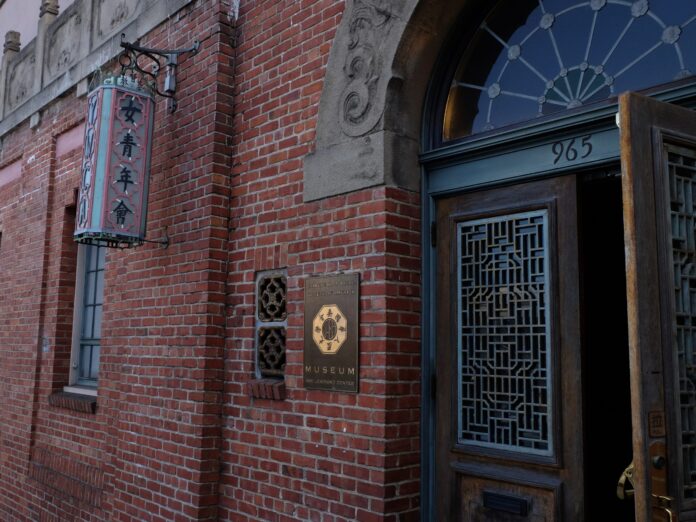The very first Chinese laundry in the United States opened in 1851, in San Francisco’s Chinatown on the corner of Washington and Grant streets. That place, with a “Wash’ng and Iron’ng” sign, is long gone.
But it’s now memorialized in a new exhibit at the Chinese Historical Society of America. Challenging a whitewashed history: Chinese laundries in the U.S., digs into the cultural and economic forces that led to this moment, and the racism that perpetuated it for more than a century.
Like other small businesses often operated by recent immigrants — restaurants, donut shops, corner stores, nail salons — a laundry was the kind of business that could be run with limited English and little capital. At the same time, an array of anti-Chinese laws severely limited the kind of work that Chinese immigrants could do; they were banned from fishing, mining and government work, and even excluded from certain unions.
And so: laundry. In the gallery of the museum’s red brick headquarters on Clay Street, visitors can see tools of the trade from its archive: An “unwieldy” iron from the early 1900s with an opening for hot coal, a brass water spray can to create steam for ironing, a box of disposable collars that were popular in the early 1900s as a way to avoid washing an entire dress shirt.
Through research, art and interviews with people whose families ran laundries, the exhibit guides viewers through San Francisco’s (and New York City’s) history of discrimination against Chinese laundries and the community’s resistance.
The exhibit is the result of four months of work by 22 graduate students at San Francisco State University and Academy of Art University, in collaboration with the Chinese Historical Society of America.
“We need to learn this history in order to stop the ‘anti-immigrant spin cycle,’” said Margaret Yee, an education specialist at the Chinese Historical Society of America.
In 1880, the San Francisco Board of Supervisors passed an ordinance requiring laundry businesses to be operated in brick buildings. Those who operated in wooden buildings needed special permission from the board. At the time, over 95 percent of the 320 laundries in the city were located in wooden structures, and two-thirds of them had Chinese owners.
The board subsequently granted exceptions to the white owners; none of the 200 Chinese applicants got permission to operate in wooden buildings.
Yick Wo, one of the owners who was denied a permit, was later arrested and convicted for continuing to run his laundry. That case went to the Supreme Court, which reversed the conviction and affirmed the 14th Amendment’s guarantee of equal protection “without regard to any differences of race, of color, or of nationality.”
That part of history, Yee said, is especially relevant today, because “we are seeing the current administration try to undo the 14th amendment, take away due process and equal protection.”

The showcase also includes historic images of Chinese laundrymen depicted as “the yellow peril” and “exotic alien” on posters, trade cards and magazines. In a cartoon from 1870, two Chinese men were seen sneaking up behind a western shoemaker, wielding swords saying “cheap labor.”
Russell Jeung, professor at San Francisco State University’s Asian American studies department, who supervised the students working on the project, sees parallels between conditions then and now.
“You could see the government targeting certain immigrant groups by trying to exclude them from certain fields of work, discouraging immigrants from seeking asylum, and mobilizing on stereotypes of immigrants as dehumanized criminals,” he said.
Today, he said, something similar could be said of Chinese immigrants in the tech sector, where they are seen as “really industrious, machine-like workers” and “an economic threat to the white workers.”
The 1882 Chinese Exclusion Act, which limited Chinese immigration and forced Chinese workers to remain in low-wage jobs, was repealed in 1943. And as more coin-operated laundromats opened and people could afford to have washers and dryers in their homes, the business of Chinese laundries declined.
But almost 140 years later, Chinese immigrants can still “feel like perpetual foreigners [who] can never assimilate, never fit into this society,” Yee said. “Even though the exact image might be different, the underlying idea still lingers now.”
The exhibition opens on May 10 at the Chinese Historical Society of America at 965 Clay St. General admission is free on the opening day, $10 in May and $12 afterwards.

